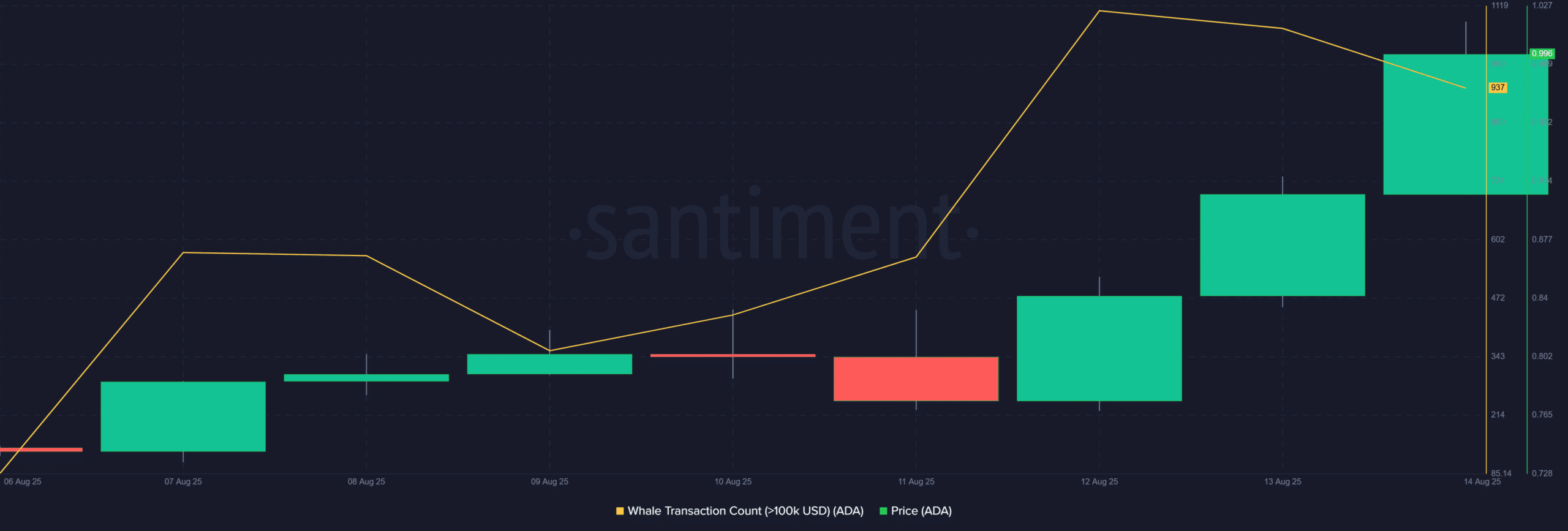After five months of volatility, Cardano [ADA] has finally broken through the resistance level of $0.90 on its third attempt. As of the time of writing, social trading volume has also soared by over $20,000, indicating renewed interest from traders.
From a technical perspective, momentum has not fully released, and there is still room for spot demand before reaching the next supply cluster. With Grayscale applying for a spot ADA ETF, both on-chain and market sentiment signals have aligned.
Whale activity is also heating up: transactions over $100,000 surged from 86 to over 1,000 in a week, indicating that whales are accumulating in large quantities.
This move may lead to short-term liquidity tightening, which also explains why ADA has risen over 30% weekly.
 In summary, this is a clear sign of strength.
In summary, this is a clear sign of strength.
ADA has outperformed Bitcoin [BTC] and its L1 peers. Both the daily and monthly charts show an increase of over 15% within 24 hours, indicating that a new round of altcoin rotation is imminent, especially as the ADA/BTC ratio reaches a five-month high.
Additionally, the inflow of whale capital and the continuously rising social trading volume are supporting the sustained price increase, laying the groundwork for a liquidity test at $1. The question now is whether this is a genuine breakthrough or merely a temporary softening.
Cardano has a history that exceeds expectations.
Looking ahead, ADA's 71% quarterly increase is impressive, slightly trailing Ethereum [ETH]'s increase of over 90%. Meanwhile, it outperforms Solana [SOL] by more than 50%, demonstrating strong relative strength among Layer 1s.
However, the price still hasn't broken through the supply cluster at $1. Two quarters have passed; will the third attempt trigger a breakthrough? On-chain capital flow and the accumulation of derivatives liquidity suggest a squeeze may occur in the short term.
Turning point: In just the past 24 hours, Cardano's open interest has surged by over 25%, reaching $1.88 billion.
This increase is more than five times the 4.35% of the largest altcoin, indicating rising leverage and crowded positions.
 In short, ADA's initiatives appear to be driven by leverage rather than being spot-dominated.
In short, ADA's initiatives appear to be driven by leverage rather than being spot-dominated.
As the market turns to risk appetite, Cardano's social volume and whale inflows surge, although the number of whale trades has dropped to 937, suggesting early profit-taking.
This sets up a volatility trap: two dense yellow liquidity clusters below the current point create a potential feedback loop, making ADA's third attempt to break the downtrend technically challenging.


